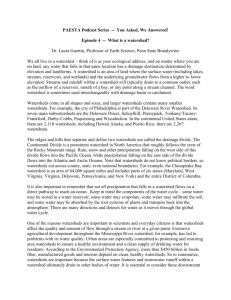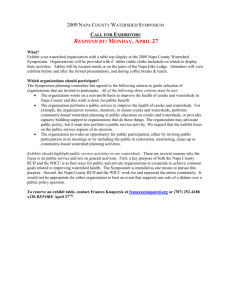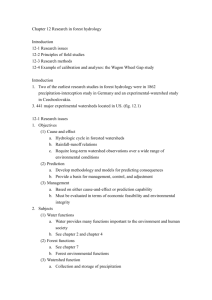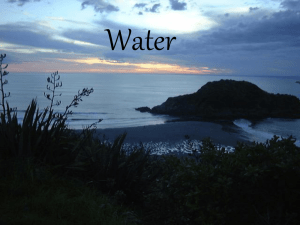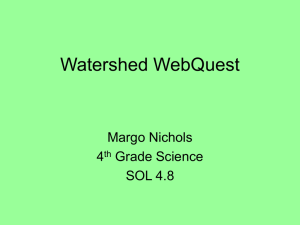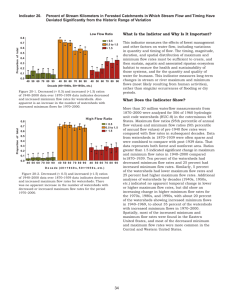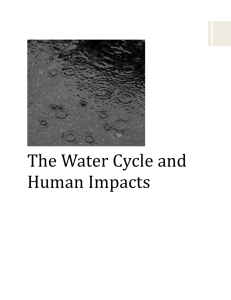MCSEEP`s Watershed Lesson Warm-Up
advertisement
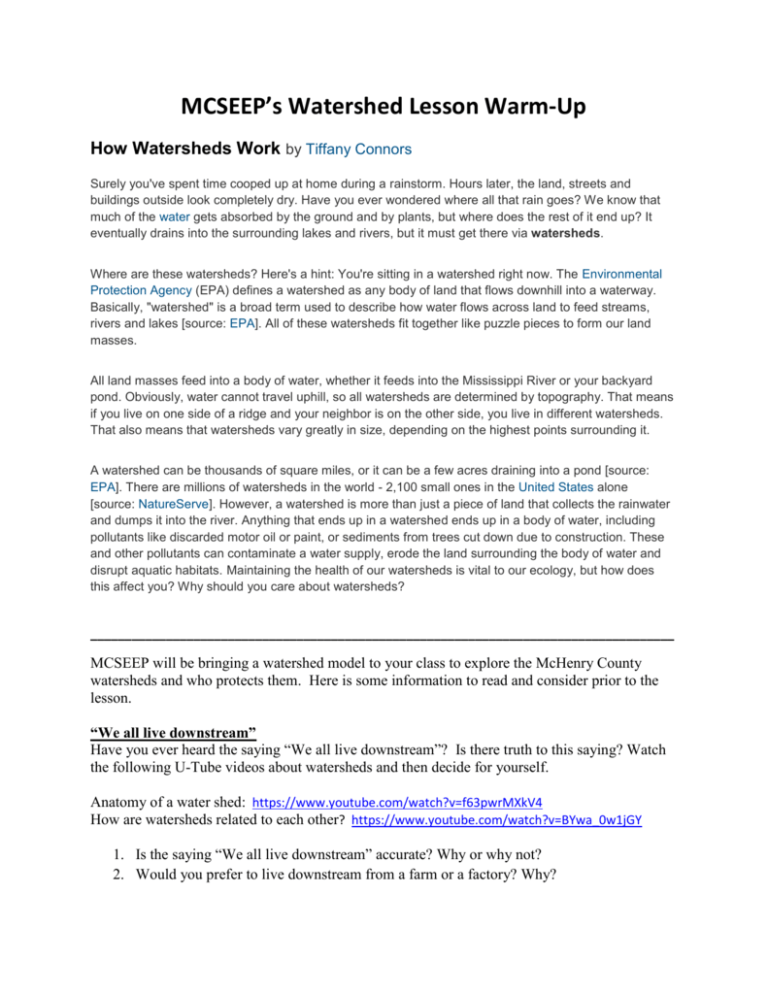
MCSEEP’s Watershed Lesson Warm-Up How Watersheds Work by Tiffany Connors Surely you've spent time cooped up at home during a rainstorm. Hours later, the land, streets and buildings outside look completely dry. Have you ever wondered where all that rain goes? We know that much of the water gets absorbed by the ground and by plants, but where does the rest of it end up? It eventually drains into the surrounding lakes and rivers, but it must get there via watersheds. Where are these watersheds? Here's a hint: You're sitting in a watershed right now. The Environmental Protection Agency (EPA) defines a watershed as any body of land that flows downhill into a waterway. Basically, "watershed" is a broad term used to describe how water flows across land to feed streams, rivers and lakes [source: EPA]. All of these watersheds fit together like puzzle pieces to form our land masses. All land masses feed into a body of water, whether it feeds into the Mississippi River or your backyard pond. Obviously, water cannot travel uphill, so all watersheds are determined by topography. That means if you live on one side of a ridge and your neighbor is on the other side, you live in different watersheds. That also means that watersheds vary greatly in size, depending on the highest points surrounding it. A watershed can be thousands of square miles, or it can be a few acres draining into a pond [source: EPA]. There are millions of watersheds in the world - 2,100 small ones in the United States alone [source: NatureServe]. However, a watershed is more than just a piece of land that collects the rainwater and dumps it into the river. Anything that ends up in a watershed ends up in a body of water, including pollutants like discarded motor oil or paint, or sediments from trees cut down due to construction. These and other pollutants can contaminate a water supply, erode the land surrounding the body of water and disrupt aquatic habitats. Maintaining the health of our watersheds is vital to our ecology, but how does this affect you? Why should you care about watersheds? _____________________________________________________________________________________ MCSEEP will be bringing a watershed model to your class to explore the McHenry County watersheds and who protects them. Here is some information to read and consider prior to the lesson. “We all live downstream” Have you ever heard the saying “We all live downstream”? Is there truth to this saying? Watch the following U-Tube videos about watersheds and then decide for yourself. Anatomy of a water shed: https://www.youtube.com/watch?v=f63pwrMXkV4 How are watersheds related to each other? https://www.youtube.com/watch?v=BYwa_0w1jGY 1. Is the saying “We all live downstream” accurate? Why or why not? 2. Would you prefer to live downstream from a farm or a factory? Why? Water is a valuable resource to all living things. McHenry County’s clean water seems to be readily available; you just turn on the faucet, right? Although water does renew itself through the water cycle, the clean water used today will not be available for use again for generations. Here in McHenry County, the water we use for drinking and bathing called potable water is pumped from deep aquifers underground. This groundwater is what we ALL use for everything we do but it is a limited resource. 3. If something is limited, what happens when it gets used up? 4. How could you build up an extra supply of a limited resource? Water Conservation When you conserve a resource like water, you use it wisely so that the rate you use it equals the rate it is replaced. 5. Do you think you use water wisely? Why or why not? 6. What would be the advantage of water conservation efforts? Water Quality Industries and even your activities throughout McHenry County have impact on our water quality. The quality of water in McHenry County affects the quality of all life in McHenry County (humans, plants, and animals). For example, in recent years Crystal Lake has been closed and swimming and events cancelled due to high bacteria levels. 7. What are the qualities of clean water? 8. Use the data chart attached to answer these questions: a) Which location (s) would provide potable water? b) How would you determine the sample locations (near farm, near factory or neighborhood well) based on the data? Now, think about this… who protects your water? Sampling of Water Quality Test Results Taken from three locations within a Watershed: Neighborhood Well, Lake near Factory, and Stream on Farm Property Maximum Contaminant Level (mg/L)* Sample A Sample B Sample C naturally present in the environment; as well from animal fecal waste. 5% 0% 6% 5% Arsenic/ 0.01 0.02 0.01 0.00 0.005 0.005 0.001 0.000 0.07 0.00 0.10 0.03 0.2 0.25 0.1 0.1 Contaminant/ Possible Sources* Total Coliforms (bacteria)/ runoff from orchards, or glass and electronics production wastes Benzene/Discharge from factories; leaching from gas storage tanks and landfills 2,4-D/ (2,4-Dichlorophenoxyacetic Acid)/ Runoff from herbicide used on row crops Cyanide (free form)/ Discharge from steel/metal factories; discharge from plastic and fertilizer factories *Maximum Contaminant Level (MCL) - The highest level of a contaminant that is allowed in drinking water. MCLs are set as close to maximum contaminant level goals (MCLGs) as feasible using the best available treatment technology and taking cost into consideration. MCLs are enforceable standards. http://water.epa.gov/drink/contaminants/index.cfm Other Measurements Safe Range Sample A Sample B Sample C pH/ 6.5 - 8.5 6.5 6.3 7.2 Clear to bottom Clear to depth of 1 foot Clear to depth of 0.5 feet Clear sample from acid rain or natural erosion Turbidity (cloudiness)/ from Soil runoff


